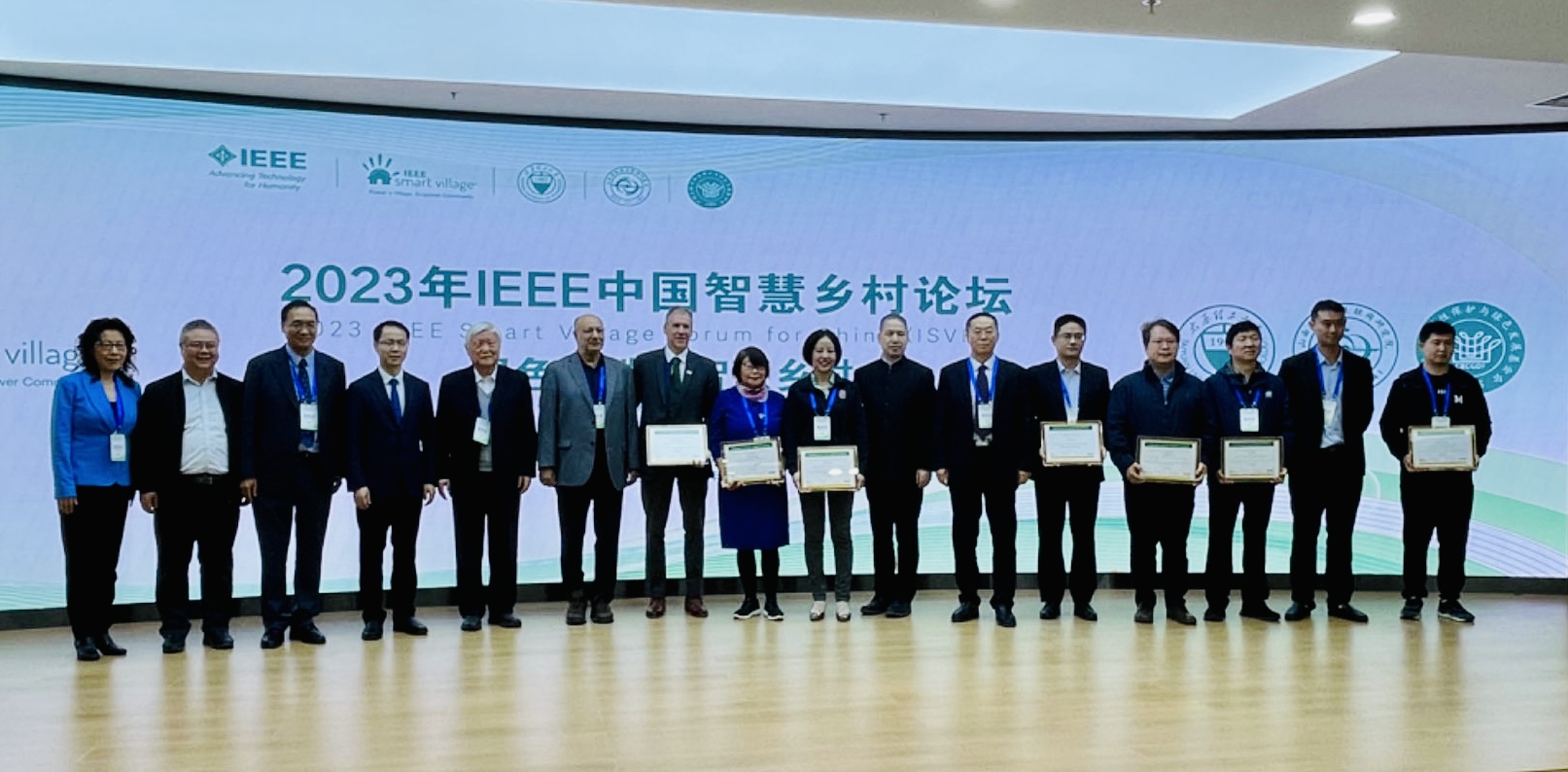On-demand automotive fleet electrification can catalyze global transportation decarbonization and smart urban mobility
Mobility on-demand vehicle (MODV) services have grown explosively in recent years, threatening targets for local air pollution and global carbon emissions. Despite evidence that on-demand automotive fleets are ripe for electrification, adoption of battery electric vehicles (BEVs) in fleet applications has been hindered by lack of charging infrastructure and long charging times. Recent research on electrification programs in Chinese megacities suggests that top-down policy targets can spur investment in charging infrastructure, while intelligent charging coordination can greatly reduce requirements for battery range and infrastructure, as well as revenue losses due to time spent charging. Such capability may require labor policy reform to allow fleet operators to manage their drivers’ charging behavior, along with collection and integration of several key datasets including: 1) vehicle trajectories and energy consumption, 2) charging infrastructure installation costs, and 3) real-time charging station availability. In turn, digitization enabled by fleet electrification holds the potential to enable a host of smart urban mobility strategies, including integration of public transit with innovative transportation systems and emission-based pricing policies.
The need for transitioning towards low-carbon energy systems, and the recent boom in available data, allows for a constant re-evaluation of global electricity sector decarbonization progress, and its underlying theoretical assumptions. Arguably, the existing decarbonization literature and institutional support frameworks focus on top-down supply side mechanisms, where policies, goals, access to financing, and technology innovation are suggested as the main drivers. Here, we synthesize eleven global datasets that range from electricity decarbonization progress, to quality of governance, to international fossil fuel subsidies, and environmental policies, among several others, and use methods from data mining to explore the factors that may be fostering or hindering decarbonization progress. This exercise allows us to present numerous hypotheses worth exploring in future research. Some of these hypotheses suggest that policies might be ineffective when misaligned with country specific motivators and inherent characteristics, that even in the absence of policy there are particular inherent characteristics that foster decarbonization progress (e.g., relatively high local energy prices, foreign energy import dependency and the absence of a large extractive resource base), and that the interaction ofcountry-specific enabling environments, inherent characteristics, and motivations is what determines decarbonization progress, rather than stand-alone support mechanisms. We present the hypothesis that existin gsupport mechanisms for decarbonization may be relying too much on blanket strategies (e.g., policies, targets),and that there is a need for support mechanisms that encompass a wider diversity of country-specific underlying conditions.
Ryan Jones & Ben Haley: Deep Decarbonization Pathways Project energyPATHWAYS: an open source model for exploring economy wide deep decarbonization pathways
We explore the operations, balancing requirements, and costs of the Western Electricity Coordinating Council power system under a stringent greenhouse gas emission reduction target. We include sensitivities for technology costs and availability, fuel prices and emissions, and demand profile. Meeting an emissions target of 85% below 1990 levels is feasible across a range of assumptions, but the cost of achieving the goal and the technology mix are uncertain. Deployment of solar photovoltaics is the main driver of storage deployment: the diurnal periodicity of solar energy availability results in opportunities for daily arbitrage that storage technologies with several hours of duration are well suited to provide. Wind output exhibits seasonal variations and requires storage with a large energy subcomponent to avoid curtailment. The combination of low-cost solar technology and advanced battery technology can provide substantial savings through 2050, greatly mitigating the cost of climate change mitigation. Policy goals for storage deployment should be based on the function storage will play on the grid and therefore incorporate both the power rating and duration of the storage system. These goals should be set as part of overall portfolio development, as system flexibility needs will vary with the grid mix.
Xi Xi is a Master’s student for the Energy Resource group. Xi Xi uses interdisciplinary methods such as quantitative modeling techniques and policy analyses to assess impacts on emissions, energy use, and other socio-economic indicators. Xi Xi looks forward to applying her knowledge in the context of international development. Xi Xi would also like to study how developing countries may be affected by or benefit from tensions between China and the West related to China’s emerging role in international development and international climate politics. In RAEl she is researching US-China climate policy, decarbonization in Africa, and China's role in Africa, among other topics. Prior to joining ERG, Xi Xi earned a BA from Wellesley College. Xi Xi has worked for the Institute for Global Decarbonization Progress (iGDP), Abt, and the Massachusetts Clean Energy Center (MassCEC). Xi Xi also enjoys traveling in their free time.
Ari Ball-Burack is a first year PhD student in the Energy & Resources Group at the University of California, Berkeley, advised by Dr. Dan Kammen. He studies data and computational tools to inform effective decarbonization policy. Specifically, he is interested in incorporating key complexities such as justice and equity, behaviorally realistic decision-making, and technological innovation in energy policy decision support tools. His current research investigates decarbonization policy interactions at the national and global levels, distributional equity in electric vehicle charging infrastructure, and representations of consumer adoption in multi-sector energy system models. Ari graduated from Williams College, where he studied Computer Science and Physics, and received MPhil degrees in Advanced Computer Science and Environmental Policy from the University of Cambridge. Prior to joining ERG, he worked as a researcher at the Cambridge Institute for Sustainability Leadership. Ari enjoys running, playing music, and quality time with loved ones (ideally in nature).
For the original click here, or navigate to China Daily: https://www.chinadaily.com.cn/a/202310/16/WS652c910da31090682a5e8aeb.html
 "We develop mathematical models of the grid. There's lots of interesting physics. There's lots of interesting science. My partnerships in China have been very productive," Kammen told China Daily. "Low-cost solar, better batteries and smart sensors. We build models that become real. My laboratory is very much based around not just basic science, but also the mission of decarbonizing the power grid and making our economy green.
"Just like the tensions that existed between the Soviet Union and the US over politics and geopolitics in the '70s and '80s, one lesson that I think scientists learned on both sides, both in the Soviet Union and in the US, is that we need to keep the scientific channels open," he said.
Kammen said that science cooperation and exchange are important at this moment. "The US and China are the G2. I like to say we are the G2 of energy, the two biggest consumers of energy and the two biggest polluters in terms of greenhouse gases," he said. "There is no climate solution unless the US and China find ways to work through their differences."
"This is a technology exchange and a global need. We are working on clean energy under climate change and fulfilling the need for decarbonization," said Xiaofeng Zhang, the vice-president of ISV and president of Global Green Development Alliance.
The ISV has extended its efforts not only within China but also across diverse regions, including Africa, Latin America, South Asia and North America, with the primary focus on delivering eco-friendly and cost-effective energy solutions to underprivileged communities who have limited access to environmental resources.
"We are doing more than only energy transferring, but also internet, electrical machinery, telecommunications and telemedicine. We introduce all of these based on the community's needs," said Rajan Kapur, the president of ISV. "We ask the community what they want to do, and based on that, we tell them what technology might be appropriate, what technology can be locally sourced."
ISV is also collaborating with Chinese local companies and organizations.
"It is also a business-development cooperation, because when you take technology and introduce it into society, you cannot just drop it over there," he said. "The capacity does not exist to use the technology; the infrastructure does not exist. So we also help with the business modeling, the governance of the enterprises that get set up," he said.
Kapur said that what they are trying to do is to have a long-term impact, and ISV has not only created scientific and business models in those regions but also has deployed supportive equipment for more than 20 or 30 years.
He emphasized that ISV's ultimate objective is to ensure affordable and clean energy access for 1 billion people worldwide through technology and cooperation between the US and China.
Additionally, ISV expects to leverage its resources to assist local communities and businesses in achieving sustainable economic growth and regionwide improvements.
"What we should remember is that it is advancing technology for all of humanity," Kapur said.
"We develop mathematical models of the grid. There's lots of interesting physics. There's lots of interesting science. My partnerships in China have been very productive," Kammen told China Daily. "Low-cost solar, better batteries and smart sensors. We build models that become real. My laboratory is very much based around not just basic science, but also the mission of decarbonizing the power grid and making our economy green.
"Just like the tensions that existed between the Soviet Union and the US over politics and geopolitics in the '70s and '80s, one lesson that I think scientists learned on both sides, both in the Soviet Union and in the US, is that we need to keep the scientific channels open," he said.
Kammen said that science cooperation and exchange are important at this moment. "The US and China are the G2. I like to say we are the G2 of energy, the two biggest consumers of energy and the two biggest polluters in terms of greenhouse gases," he said. "There is no climate solution unless the US and China find ways to work through their differences."
"This is a technology exchange and a global need. We are working on clean energy under climate change and fulfilling the need for decarbonization," said Xiaofeng Zhang, the vice-president of ISV and president of Global Green Development Alliance.
The ISV has extended its efforts not only within China but also across diverse regions, including Africa, Latin America, South Asia and North America, with the primary focus on delivering eco-friendly and cost-effective energy solutions to underprivileged communities who have limited access to environmental resources.
"We are doing more than only energy transferring, but also internet, electrical machinery, telecommunications and telemedicine. We introduce all of these based on the community's needs," said Rajan Kapur, the president of ISV. "We ask the community what they want to do, and based on that, we tell them what technology might be appropriate, what technology can be locally sourced."
ISV is also collaborating with Chinese local companies and organizations.
"It is also a business-development cooperation, because when you take technology and introduce it into society, you cannot just drop it over there," he said. "The capacity does not exist to use the technology; the infrastructure does not exist. So we also help with the business modeling, the governance of the enterprises that get set up," he said.
Kapur said that what they are trying to do is to have a long-term impact, and ISV has not only created scientific and business models in those regions but also has deployed supportive equipment for more than 20 or 30 years.
He emphasized that ISV's ultimate objective is to ensure affordable and clean energy access for 1 billion people worldwide through technology and cooperation between the US and China.
Additionally, ISV expects to leverage its resources to assist local communities and businesses in achieving sustainable economic growth and regionwide improvements.
"What we should remember is that it is advancing technology for all of humanity," Kapur said.
For the California Magazine article, click here.
Count on comedians to nail the zeitgeist.
I’m thinking of comics like Marc Maron, whose act riffs off existential pain points like mortality, antisemitism, the delaminating geopolitical situation, and, of course, that multigigaton carbon elephant in the room, climate change. “The reason we’re not more upset about the world ending environmentally, I think, is that, you know, all of us in our hearts really know that we did everything we could,” Maron deadpans. “We brought our own bags to the supermarket,” he says, then pauses a few beats. “Yeah, that’s about it.” No surprise that comedians are able to play our eco-dread for yuks. Comedy is often rooted in the fertile manure of uncomfortable truths: we laugh so we don’t sob. And that’s all fine and good; laughter’s a good antidote to the malaise that comes from doomscrolling our newsfeeds day in, day out. But are we really ready to throw in the towel and laugh ourselves into oblivion? And is Maron correct? Have we really done nothing to confront our foremost environmental crisis? Hardly. True, we haven’t yet reversed the upward trend in greenhouse gas emissions, and the challenge of transitioning away from fossil fuels often seems insurmountable. Is it, though? According to Berkeley experts interviewed for this story, there’s reason for hope that we’ll make it through the bottleneck yet. The technology is already here and improving all the time. It won’t be easy, but it is doable. Now, let’s see how:
Solar production has been growing by more than 20 percent annually over the past five years, and likely would have been greater but for the pandemic.

A central goal of the Biden administration is the construction of 500,000 new EV charging stations. For perspective: There are currently fewer than 150,000 gas stations in the entire United States.

Judkins and colleagues evaluated a wide array of candidate chemistries before settling on iron-air batteries, which work by rusting and unrusting thousands of iron pellets with every cycle.
In sub-Saharan Africa alone, 600 million people live without electricity. Providing them carbon-free power will require microgrids.

For the first time on this planet—other than during a thermonuclear explosion—a fusion reaction was created that produced more energy than was required to initiate the process.
Fission generates a lot of energy from a small footprint. Diablo Canyon, California’s sole nuclear plant, produces almost 10 percent of the total electricity consumed in the state, and it does it within a confine of 600 acres.
At this point, we know what we must do to turn things around. Even better, we have the technologies and techniques to do it. But we need to deploy them.
As governments and non-state actors strive to minimize global warming, a primary strategy is the decarbonization of power systems which will require a massive increase in renewable electricity generation. Leading energy agencies forecast a doubling of global hydropower capacity as part of that necessary expansion of renewables. While hydropower provides generally low-carbon generation and can integrate variable renewables, such as wind and solar, into electrical grids, hydropower dams are one of the primary reasons that only one-third of the world’s major rivers remain free-flowing. This loss of free-flowing rivers has contributed to dramatic declines of migratory fish and sediment delivery to agriculturally productive deltas. Further, the reservoirs behind dams have displaced tens of millions of people. Thus, hydropower challenges the world’s efforts to meet climate targets while simultaneously achieving other Sustainable Development Goals. In this paper, we explore strategies to achieve the needed renewable energy expansion while sustaining the diverse social and environmental benefits of rivers. These strategies can be implemented at scales ranging from the individual project (environmental flows, fish passage and other site-level mitigation) to hydropower cascades to river basins and regional electrical power systems. While we review evidence that project-level management and mitigation can reduce environmental and social costs, we posit that the most effective scale for finding balanced solutions occurs at the scale of power systems. We further hypothesize that the pursuit of solutions at the system scale can also provide benefits for investors, developers and governments; evidence of benefits to these actors will be necessary for achieving broad uptake of the approaches described in this paper. We test this hypothesis through cases from Chile and Uganda that demonstrate the potential for system-scale power planning to allow countries to meet low-carbon energy targets with power systems that avoid damming high priority rivers (e.g., those that would cause conflicts with other social and environmental benefits) for a similar system cost as status quo approaches. We also show that, through reduction of risk and potential conflict, strategic planning of hydropower site selection can improve financial performance for investors and developers, with a case study from Colombia.